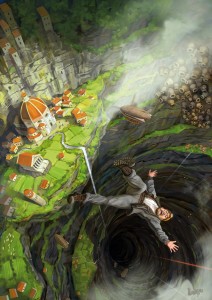
Many of us know the term “infodump,” where a whooooole bunch of information necessary for understanding the story gets thrown at the reader, sometimes in the form of dialogue, sometimes outright chunks of books, or some other form. We want to avoid these because they’re usually dry and a little boring, and because they put readers off.
But at the same time, there is information we -need- for readers to know. And sometimes we may not realize it. If we don’t give it, then events may seem unlikely or heavy-handed or even incomprehensible.
I’ve been reworking a novel for the final time, and one thing I’ve realized in doing it is that the progression of scenes in the last section is not clear. I needed to spend more time being clear that the characters were moving from one place to another so readers could understand where they ended up. And I’d been coy about it, to the point where the reader just wasn’t getting that information.
This is where getting someone else to read a piece is crucial. Because that progression is so clear in the writer’s head that we cannot perceive what’s missing for the reader. One of the most important questions you can ask a reader is “What questions did this leave you with?” or “What didn’t you understand?” Because it’s just as easy to be too subtle — perhaps even easier — than to be overt, since what feels very obvious to you may not be a fraction as apparent to your reader.
And holy cow, how is it that in this version, which I had sent out to my agent already, that I found this on one page: “(insert description later)”? ARGH.







